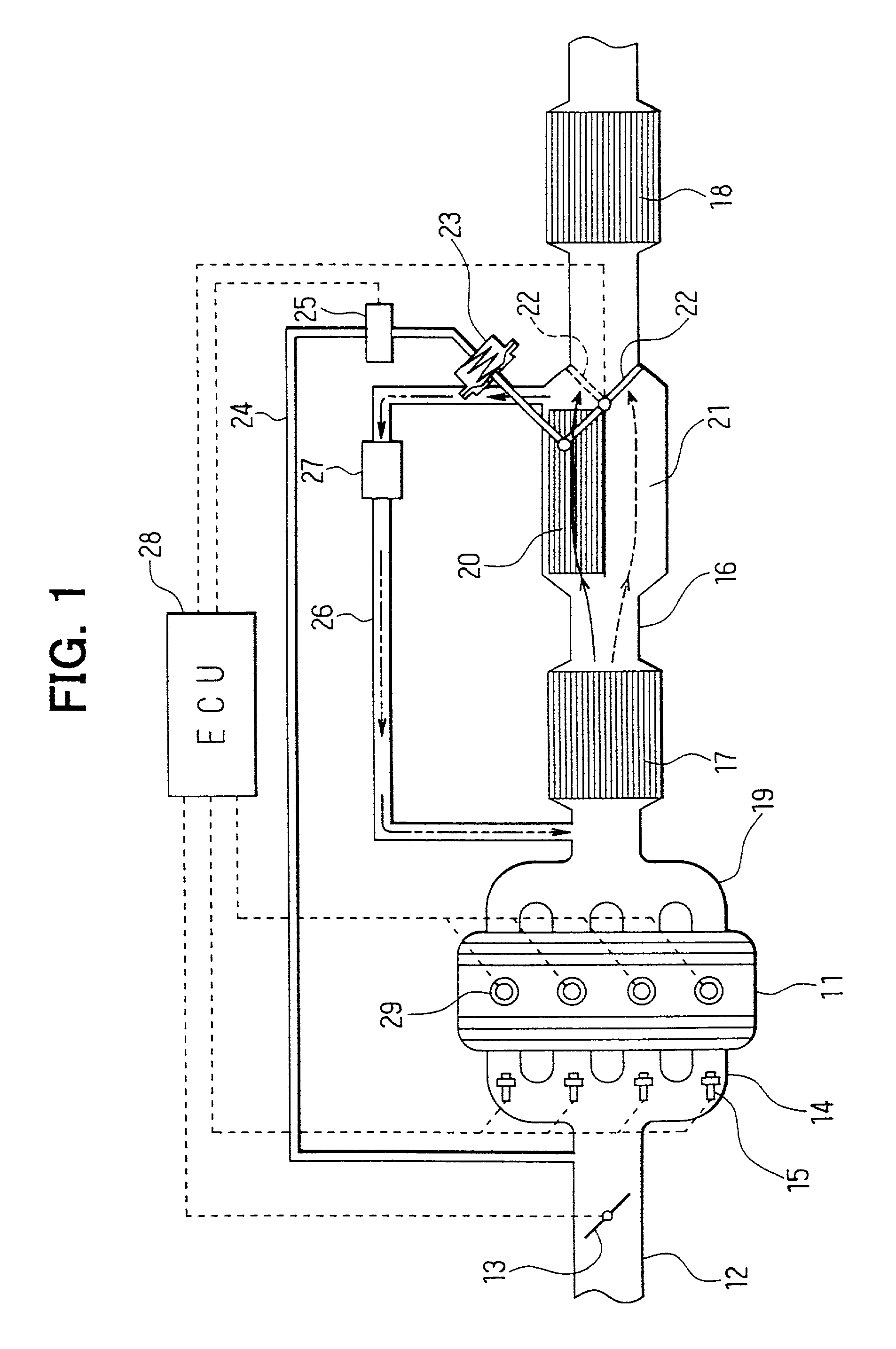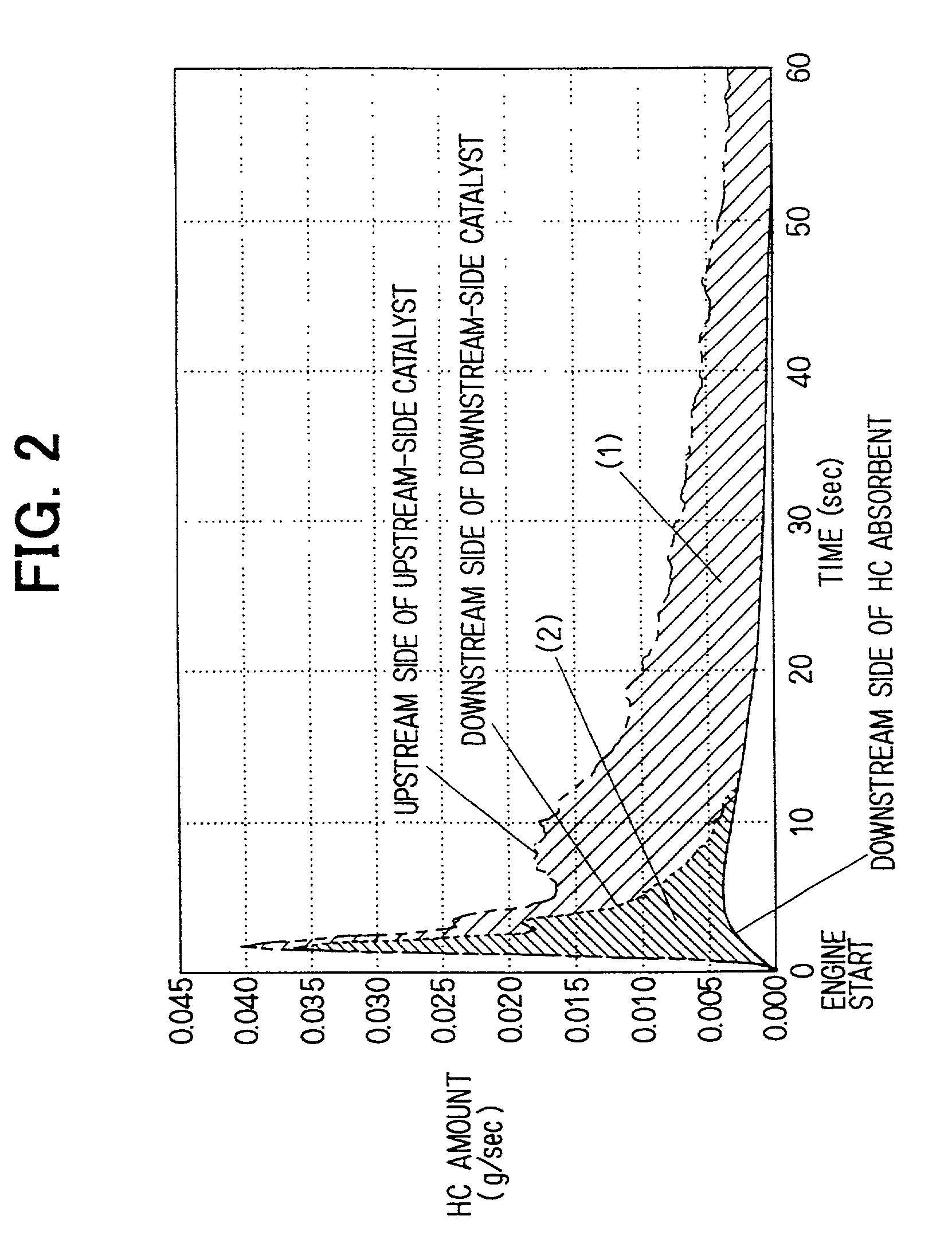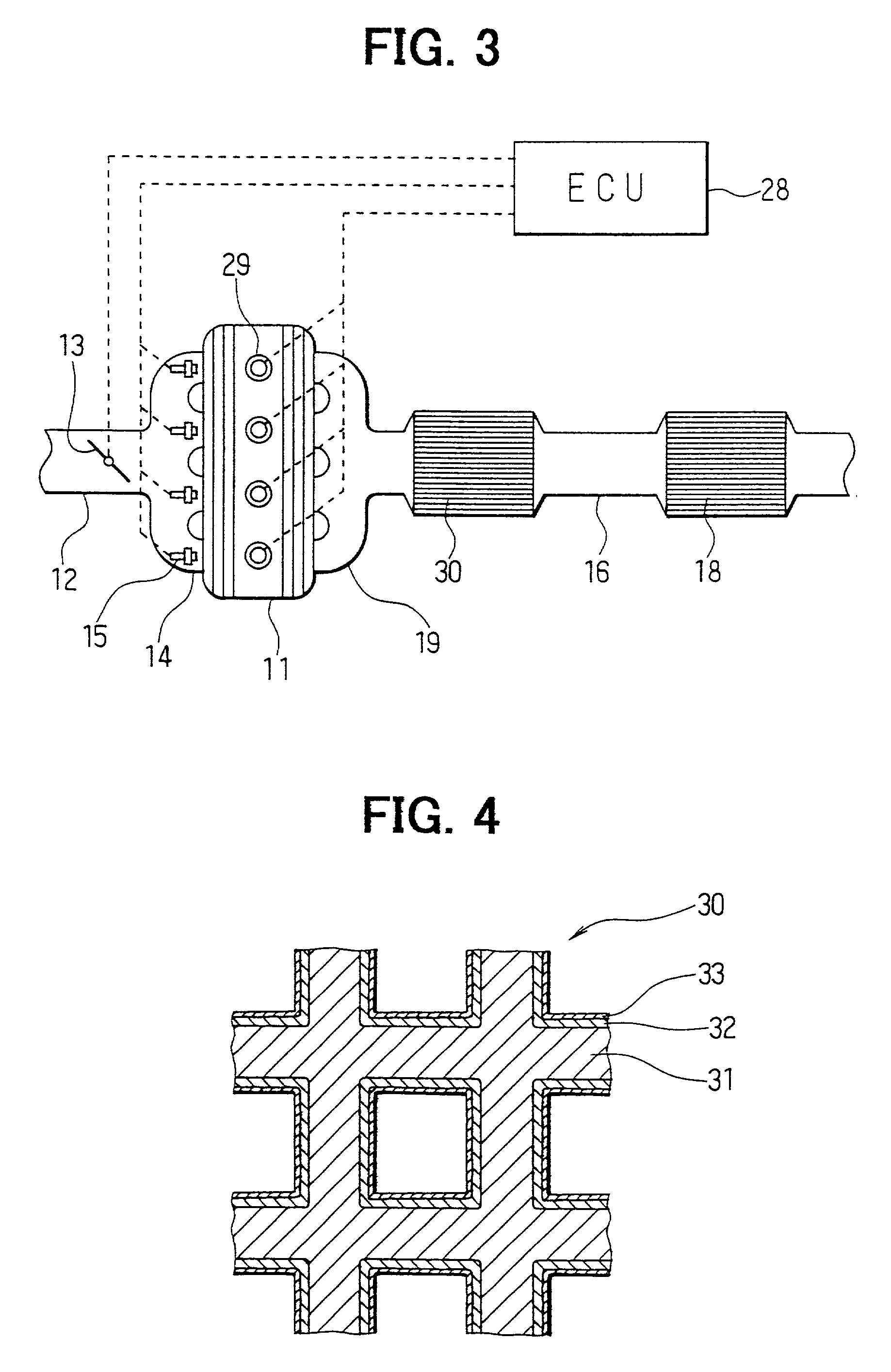Exhaust gas purification apparatus of internal combustion engine
- Summary
- Abstract
- Description
- Claims
- Application Information
AI Technical Summary
Benefits of technology
Problems solved by technology
Method used
Image
Examples
first embodiment
(First Embodiment)
[0035] The first embodiment of the present invention is explained by referring to FIGS. 1 and 2 as follows.
[0036] As shown in FIG. 1, a throttle valve 13 for adjusting throttle opening is provided in an intake pipe 12 of an engine 11. A fuel injection valve 15 for injecting fuel into cylinders is provided in cylinder branch pipe units of an intake manifold 14 for introducing fuel into the cylinders.
[0037] An upstream-side catalyst 17 and a downstream-side catalyst 18, which are used for reducing the quantity of each noxious component in exhaust gas, are provided in series on an exhaust pipe 16 of the engine 11. The upstream-side and downstream-side catalysts 17 and 18 are each a three-way catalyst for removing HC, Co and NOx or an oxide catalyst for removing HC and CO. The upstream-side catalyst 17 is provided at a location close to an exhaust manifold 19, so that early activation thereof can be completed while the engine 11 starts. The downstream-side catalyst 18 ...
second embodiment
(Second Embodiment)
[0052] The second embodiment of the present invention is explained with reference to FIGS. 3-7. In the second embodiment, a two-layer coat catalyst 30 is provided at a location close to the exhaust manifold 19 in the exhaust pipe 16 as shown in FIG. 3. A downstream-side catalyst 18 is provided at the downstream side of the two-layer coat catalyst 30 typically on the lower surface of the vehicle body. As shown in FIG. 4, the 2-layer coat catalyst 30 is formed by coating an HC absorbent 32 made of typically zeolite on the inner surface of a catalyst support 31 and coating a catalyst 33 such as a three-way catalyst or a noxide catalyst on the surface of the HC absorbent 32. The catalyst support 31 has a shape resembling a honeycomb made of ceramic such as cordierite. The catalyst 33 is formed into a multi-porous shape having a large number of fine pores. The HC passes through the pores and flows to the HC absorbent 32 absorbing the HC.
[0053] The catalyst 33 in the to...
third embodiment
(Third Embodiment)
[0069] Next, the third embodiment of the present invention will be explained with reference FIGS. 8-12. As shown in FIG. 8, a throttle valve 63 for adjusting throttle opening is provided in an intake pipe 62 of an internal combustion engine 61. A fuel injection valve 65 for injecting fuel into cylinders is installed at a location in close to an intake port of an intake manifold 64 for introducing air to the cylinders. On the other hand, a catalyst 67 such as a three-way catalyst for removing HC, CO and NOx from exhaust gas is provided in an exhaust pipe 66 of the engine 61.
[0070] An engine control circuit 68, which is referred to hereafter as an ECU, employs a microcomputer as a main component. By execution of a fuel injection control program stored in an embedded ROM (a storage medium), the ECU 68 controls the quantity of the fuel injection of the fuel injection valve 65. In addition, by execution of an ignition control program stored in the ROM, the ECU 68 contro...
PUM
 Login to View More
Login to View More Abstract
Description
Claims
Application Information
 Login to View More
Login to View More - R&D
- Intellectual Property
- Life Sciences
- Materials
- Tech Scout
- Unparalleled Data Quality
- Higher Quality Content
- 60% Fewer Hallucinations
Browse by: Latest US Patents, China's latest patents, Technical Efficacy Thesaurus, Application Domain, Technology Topic, Popular Technical Reports.
© 2025 PatSnap. All rights reserved.Legal|Privacy policy|Modern Slavery Act Transparency Statement|Sitemap|About US| Contact US: help@patsnap.com



